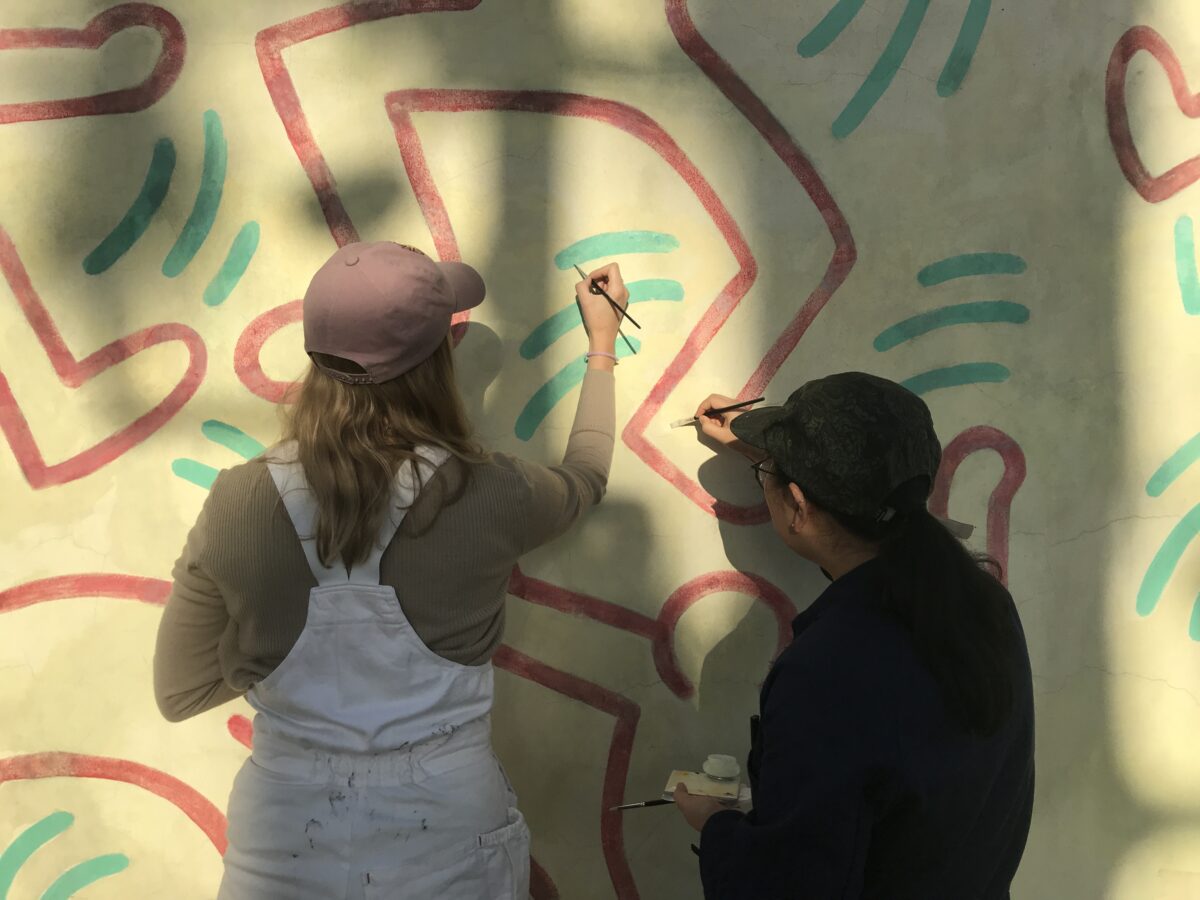
Robyn and Eleanor in their studio. Image: Maite Pons
EV: What drew me to conservation initially was the idea of going beyond the surface of artworks, focusing on the materials and how they contribute to understanding art and culture. After learning that it existed as a profession, I swiftly focused my attention on becoming a conservator. After finishing my studies at the Grimwade Centre, I spent the next five years chasing opportunities and gaining experience in museums and private practice across Australia, New Zealand and the United States.
RH: I was similarly interested in materials and the process of art making but from my previous practice as an interior designer. Throughout my design practice, I was always inspired by art and was most excited about adapting materials in unconventional ways to solve design problems. Conservation allowed me to pursue my creative practice in a more holistic and integrated way, and hopefully positively contribute to the preservation and expression of culture.
EV & RH: In 2019 we founded c/o Studios, with a focus on the treatment of paintings and contemporary art. Our first treatments were completed in a studio provided by Studio M., a paper conservation business run by Hanna Sandgren with whom we attended university. Hanna was kind enough to rent some of her space to us on days she wasn’t using it. During this time, we found that we had shared visions and values about the trajectory we wanted our businesses to take, and how we wanted to work. When the top floor of Hanna’s studio became vacant we moved in, sharing the space with Objects Conservation Melbourne. Working collectively, sharing resources and expertise, was baked into our practice from its inception.
What does a typical work week look like at the moment? What sorts of objects/projects do you tend to work on?
Our weeks are pretty varied; at the moment we have a few big projects, either at institutions or with large bodies of work coming to our studio. Around those projects we have a number of small treatments, ranging from standard painting conservation treatments, such as consolidation and varnish removal, to touching up frames and contemporary sculpture. Over the last year, we have developed a number of working relationships with contemporary artists, and have been conducting conservation research in areas such as materials analysis and performance, display methods and ongoing preservation. Artists’ chosen mediums have primarily been new and novel art materials, and it is really exciting to be able to think through how they might behave in the future. It is also exciting working alongside artists who are considering questions of conservation while making works.
I read on one of your social media posts that you work to actively cultivate a collegiate work environment. Can you talk about why this is important and/or how it might influence the way you approach projects?
We believe it is important to decentralise the ‘expert’ role of the conservator and to recognise the value that collaboration with communities and other disciplines can bring to conservation. To enact this mission, we believe in integrating this collaborative ethos in all levels of our activities, not just how we work with clients but with other practitioners. We recognise that as a collective we are much stronger than the sum of our parts. Working in a collective allows us to approach projects with more confidence than if completed alone. With access to a range of practitioners, we have a wide knowledge base and support network to tackle most conservation problems.

Eleanor and Robyn working on the Haring mural in Collingwood, Naarm/ Melbourne. Image: Lucy Moore
The e-News has a large student and emerging conservator population in its readership; do you have any comments on how you see the landscape of conservation in Australia accommodating different approaches to practising conservation?
The difficulties faced in employment and training are not new issues for the profession, and as funding for the cultural sector is further reduced, traditional opportunities for emerging conservators can be limited. There is also a need to make the profession more accessible, and therefore the mode in which we practise conservation also needs to be flexible to accommodate the practical needs of more diverse groups of people. This environment can encourage new ways of practising conservation that must be creative, adaptive and enterprising, and we will hopefully see a greater acceptance of hybrid and flexible practices by the profession. The success of any practice requires a strong network of relationships with peers as well as potential clients to source conservation projects and opportunities.
Do you have a favourite object or collection that you have worked on? Or do you have a favourite type of treatment/activity you like to work on?
Working with artists has been the most fulfilling type of work we have been involved in so far, such as our work with Jessie French. Supported by Australia Council and Creative Victoria grants, our research relationship with Jessie aims to assist and support the artist in solving potential design challenges in displaying her algae-based bioplastic artworks. Work has been varied and responsive to the needs of the artist, such as: developing repair, display and mounting methods; tensile testing and performance; and materials degradation and characterisation. Our work with Jessie has encouraged other artists to approach us for advice and collaboration, and we are excited to help artists develop their practices with conservation in mind.